In today’s article, I’m going to walk you through everything you need to know about optimizing your website for SEO.
On-page SEO basics
Before we get into the details, let’s get the basics straight.
What is on-page SEO?
On-page SEO, also known as on-site SEO, is the process of optimizing the content you publish to be found on search engines. It’s the practice of optimizing titles, inserting keywords, and ensuring that the page matches search intent and topical relevance.
This differs from off-page SEO, which is optimizing for factors that are not on your own website (e.g. link building strategies).
Why is on-page SEO important?
The main reason on-page SEO is important is that if you don’t optimize your content, it will not rank. On-page provides the most basic ranking signals to Google.
Google will always crawl your pages for keywords and to ensure your page matches up with what the searcher was looking for. According to Backlinko’s research, content comprehensively covering a topic significantly out performs content that doesn’t (in terms of rankings). Brian Dean and his team also found that the vast majority of title tags in Google exactly or partially match the keyword that they rank for.
There’s a lot more research that shows why on-page is vital to success.
If you look at the search engine results page (SERP) for top ranking pages for almost any keyword, you’ll see the keyword in the title and the post optimized for that keyword:
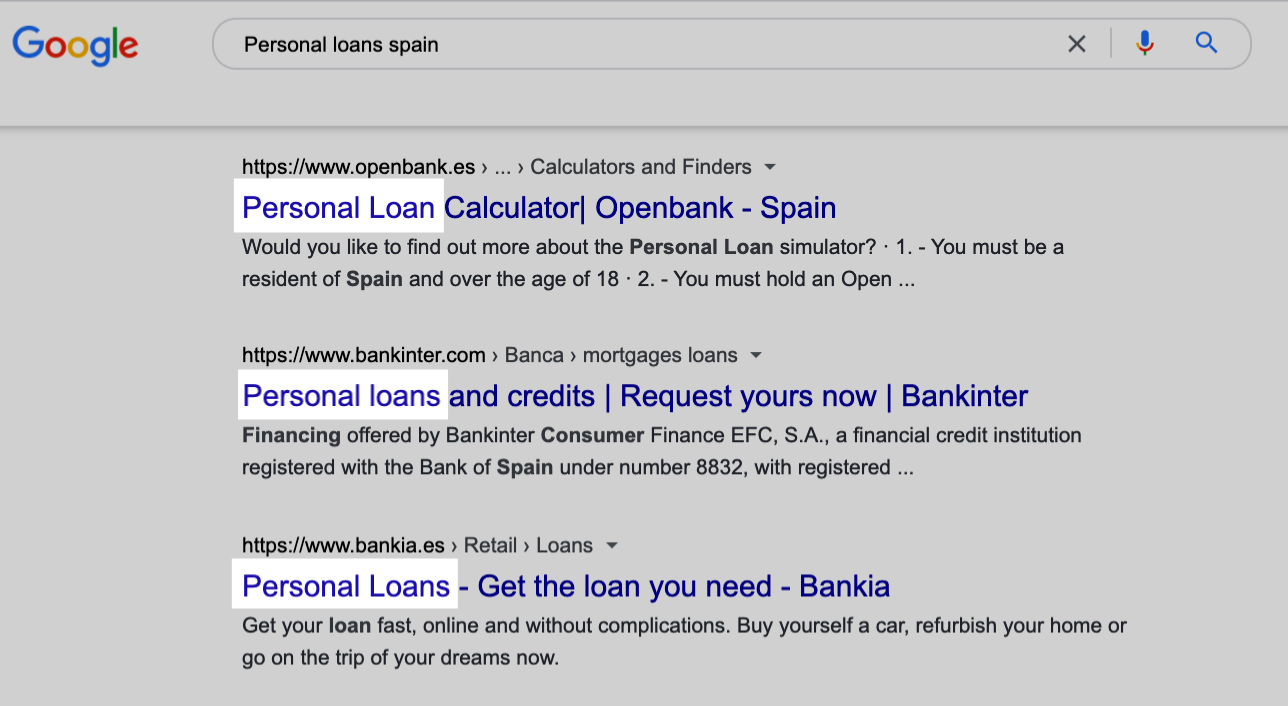
Here at Flying Cat, we’ve helped our clients outrank their competitors(with higher domain authorities, older websites, more backlinks) with on-page alone.
But there’s more to on-page SEO than putting keywords in your title. Today, we’ll cover that, PLUS everything else you need to rank on today’s Google.
Let’s dive in.
We created a guide to interviewing customers for content that resonates with them
CREATE CONTENT FOR GROWTH
On-page SEO factors
There are loads of seo ranking factors pay attention to when optimizing your page for search engines. All of them are important. The on-page SEO factors are:
- E-A-T
- Value and usefulness
- Search intent
- Keyword use
- Content
- Title tag
- URL
- Meta description
- Internal linking
- Headlines
- Header tags
- SEO writing
- Image optimization
E-A-T
E-A-T stands for Expertise, Authoritativeness, Trustworthiness.
Here’s an excerpt from Google’s 175-page search quality evaluator guidelines covering E-A-T:
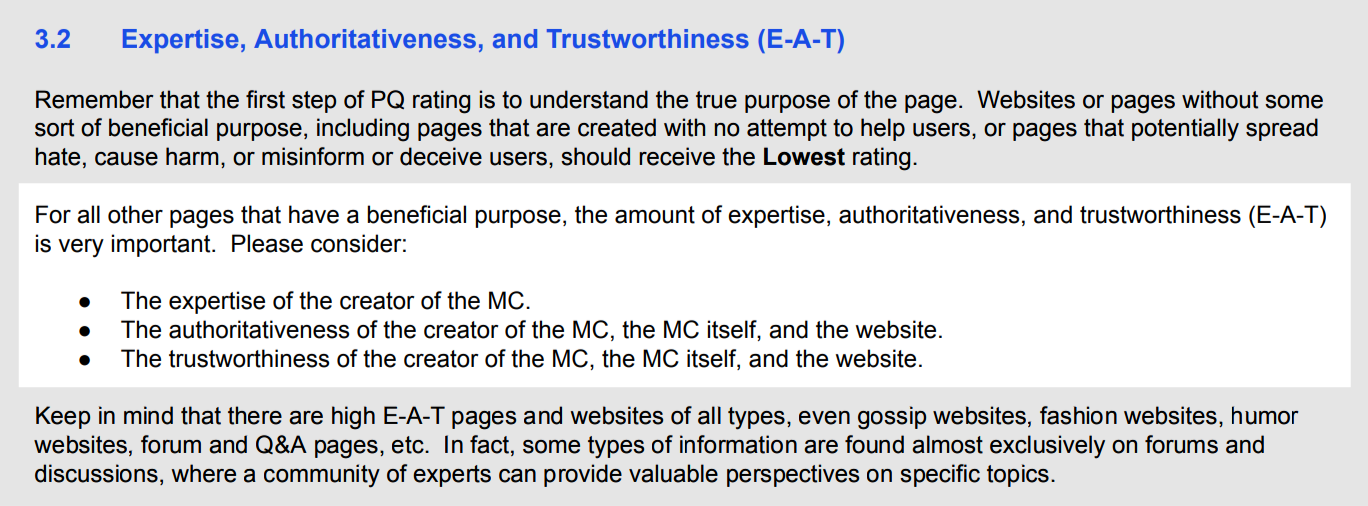
The most important thing your page can do is be useful to the user.
Then, if your page is useful, you still need to show some sort of expertise, authoritativeness, and trustworthiness.
Generally, this is done by publishing frequently on your topic.
That’s why you shouldn’t only publish sales pages, and you certainly should never try to deceive people when creating SEO content. People searching on Google and other search engines have intent when they search.
It’s not an awareness channel like social media.
Your only job as an SEO is to give the searcher exactly what they’re looking for.
Not sure what will be most helpfl to your user? We created a guide for interviewing them.
provide maximum value
Value and usefulness
Providing value is on-page optimization.
There is simply too much content out there (most of it is bad, and most of it also virtually unfindable) not to provide value. When creating content you’ll be optimizing for search, try to do it in a way that makes you confident that:
- The majority of your readers will have truly learned something new
- It would be highly unlikely that the searchers who click on your result hit “back” to find a different result
- Almost everyone who reads your content would say it’s useful and of high value.
That means you aren’t using stock photography just to fill space—you’re providing graphics or images that are well-designed and help the reader understand your topic.
It means you’re not writing just because you need a piece of content—you’re writing because you have something useful and important to share.
And it also means you don’t write about topics you don’t understand—at the very least, interview experts and get contributors to help you build content out instead of paraphrasing the other top Google results.
Search intent
Everyone who uses Google wants to figure something out.
Whether it’s where to buy Airpods or how to get to the nearest ice cream shop—they use Google as a tool to find stuff. Every single user of Google has a specific intent when they type in a query.
For instance, if you type “fix broken macbook screen”, the results would be people who can repair your screen:
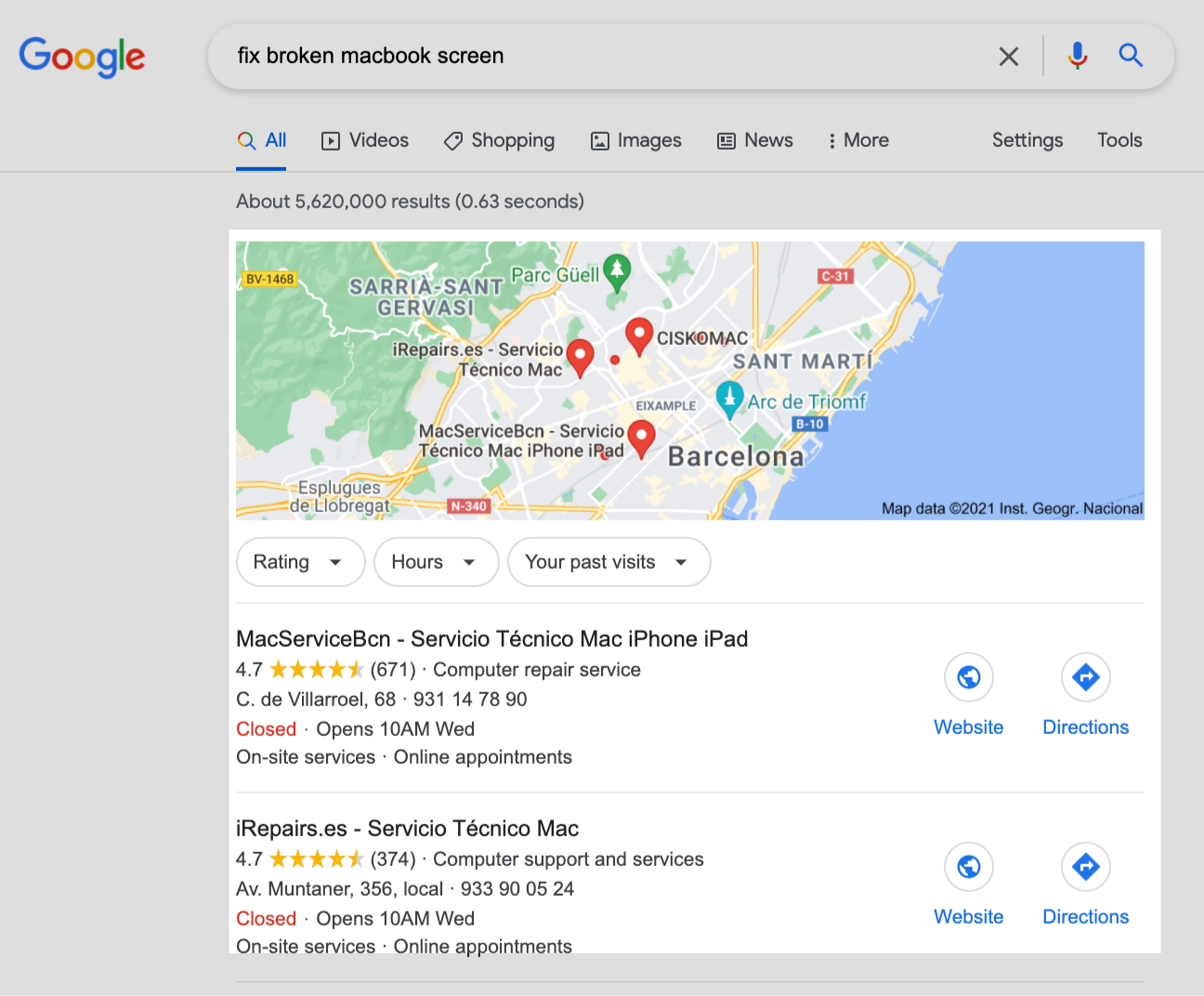
The intent of the searcher is to find someone to do it for them. If I search “How to fix a broken macbook screen”, then I see this:
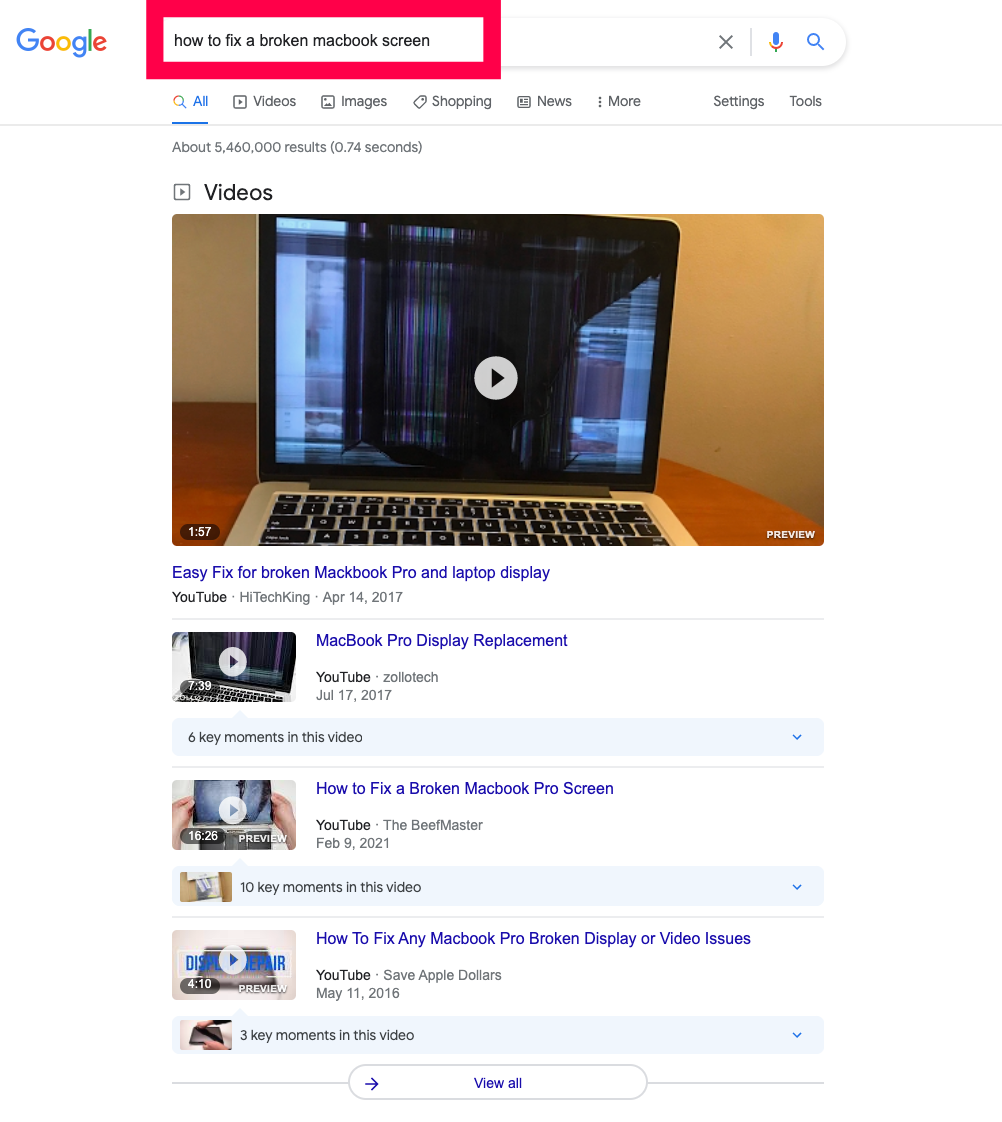
It’s your job to understand that intent and deliver on it when you optimize your content for search.
Google makes billions advertising because it’s the #1 search engine on the planet. The reason it holds that status is because it’s the best at showing users what they’re looking for.
When a user exits quickly after clicking on your result, Google knows your content didn’t match their intent.
It doesn’t like when you do that, so they move your result down and away from the eyes of the searcher.
That way, they can find something more relevant.
Always check the search intent of the keyword you want to optimize your content for before you create/optimize the content.
Related post: Black Hat SEO: What Exactly Is It?
Keyword use
On-page optimization goes far beyond just keywords.
It’s about comprehensive coverage of the topic, understanding the relationship between the elements in the content, and most of all—completely answering the searcher’s questions.
That said, keyword use is still important.
Keywords usually don’t come alone.
You’ll have the primary keyword (the main one you want to rank for) and the secondary keywords (or LSI keywords—latent semantic index keywords).
For example, if your keyword is “content marketing”, your LSI keywords will be something like “content marketing strategy”, “social media” and “content creation”. Most articles that:
- Cover the topic thoroughly
- Have good user experience metrics (e.g. people are staying a while on the page and engaging)
Will also use the LSI keywords.
If you use them too, you’ll indicate to Google that your content covers the topic thoroughly as well.
Some best practices for keyword use are to:
- Include primary keywords in your title tag.
- Include primary keywords in the first 50-100 words of your content.
- Include them in at least one sub-heading.
- Use them naturally a few times in the piece.
That’s it. Then, provided you cover the topic thoroughly, you’ll most likely naturally include the LSI keywords you need.
Content
I hate to be cliché, but I’m here to tell you once again that the quality of the content you publish is really, really important.
Writing copy that’s well-researched, backed by relevant data, useful and truthful is doing on-page SEO.
It should also be an interesting read and maybe even entertaining. Even if you’re doing SEO for B2B you should find a way to make it innovative, informative and pleasing to consume.
The content should be uniquely valuable—as in providing an angle that the other 10 top pages don’t. The UX should be beautiful, smooth and seamless, and the whole experience should be visually pleasing as a whole.
As a general rule, make sure to make your content comprehensive.
Title tag
The title tag is displayed on the SERPs as the clickable title of a page. It’s the first thing searchers will see.

Its role is to get them to click.
When writing your title tag, ensure that you:
- Include the keyword
- Match the search intent
- Give searchers a reason to click
And one last tip: if you’re writing a listicle, use numerical digits instead of written out words. It just works better!
URL
The URL structure is an important part of on-page SEO.
URLs are so important that they show up above the title tag.

Here’s how you can make SEO-friendly URLs:
- Keep them short
- Include the primary keyword
Usually, I just make the URL the primary keyword.
Meta description
The meta description is the description that comes below the title tag.

The meta description does not technically affect rankings.
However, it does affect CTR.
The more people find your description relevant, the more likely they are to click.
The more they click, the more you’ll rank, and you know the rest of that story.
Internal linking
Internal linking is one of the most important things you can do for your on-page SEO.
Internal linking is when you link from one page on your website to another page on your website.
You want to link to pages that are within the same category.

When you’re linking, be sure to hyperlink it to a keyword-rich anchor text.
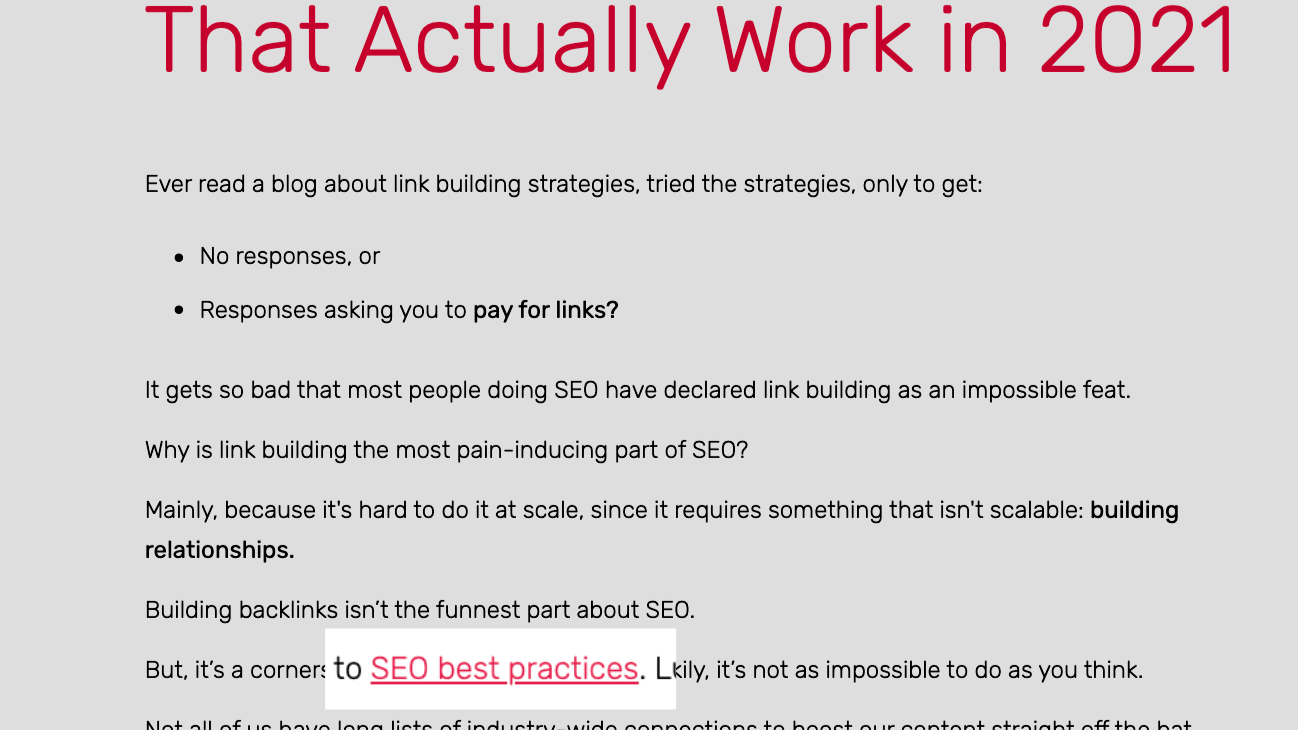
Subheadings and header tags
Your SEO-optimize content should be broken into sections with subheadings.
Each subheading should be wrapping in H2 or H3 tags.

Ideally, they should include the primary keyword and some secondary keywords.
Also, they should provide enough value inherently so that a reader can skim the article, reading only the headings, and still leave will more information than they came with.
Image optimization
Every image you publish on your content should have an optimized name and alt text.
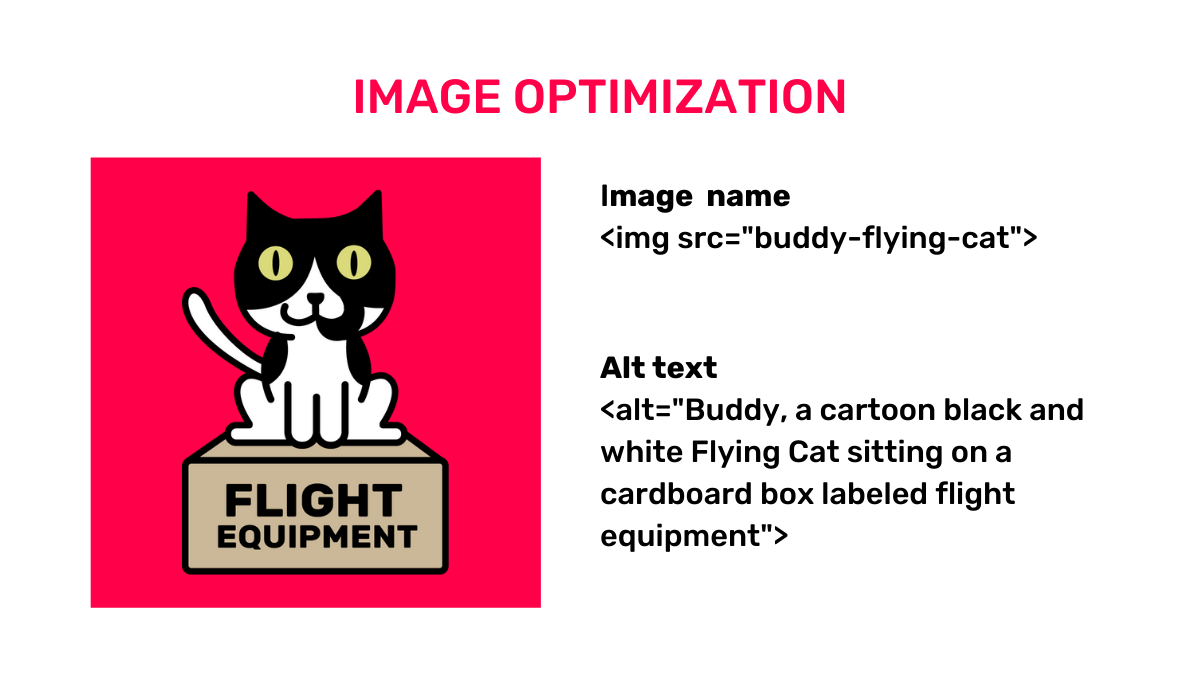
This helps for a few reasons:
- You help Google understand what the image is
- Visually impaired users can have a voice tell them what the image is
- You get a chance at ranking in Google’s image pack
Whenever possible/natural, I try to include the keyword in the image name and the alt text.
Always try to include images in your SEO content to give more context and help the reader better understand you.
If Google finds a page with images of “Featured snippets” and “Knowledge Panels”, it’ll know you’re talking about SERPs.
On-page UX signals
Google cares a lot about UX.
That’s why it looks at metrics like bounce rate, session duration, and dwell time and other user experience metrics to decide rankings.
You should make it easy and pleasant for searchers to get the information they need quickly.
Make your content skimmable by:
- Breaking up your content: break it up into chunks, use a lot of subheadings, never write a paragraph longer than 4 lines (even that’s too long)
- Using bulleted lists: sometimes you can just provide a bulleted list instead of a paragraph. Use a lot of these.
- Using images: try graphs and screenshots to explain your points better.
Related post: SEO Metrics: 10 Underrated Yet Deeply Meaningful Metrics
Why you should never ignore on-page SEO
On-page SEO is the most important optimization you need to do to rank. It’s also completely in your own control, unlike off-page SEO. I’d love to hear in the comments below: which of these steps are you going to go apply to your own website now?
